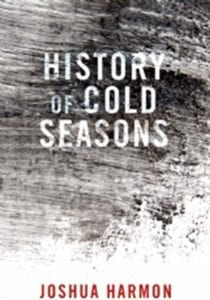
Shelf Unbound: What’s a typical starting point for you in writing a story, for example the sisters who think their older brother keeps a girl tied up in the woods in “Rope”?
Joshua Harmon: My stories typically begin with an image or incident (drawn from life or imagined) or sometimes a phrase. “Rope,” however, began more with the memories of “the woods” at the edges of the city neighborhood where I grew up: thin rinds of trees separating the houses on one street from the houses on another, a place where adults—at least, responsible adults—rarely went, but where we kids retreated all the time, even though (or because) there was something slightly creepy about the woods. Also, years ago, a young girl knocked on the door of my apartment and mumbled something about looking for a missing bicycle, and that too has always stuck with me.
Shelf Unbound: How do you develop your characters, such as the woodcarver waiting for his wife to come to him in “The Fisherman and His Wife?”
Harmon: Is it a cop-out to say that my characters often surprise me with their actions, just like Flannery O’Connor’s did to her? I doubt this is because my characters are as well-drawn as hers; they aren’t. In the case of the narrator in that story, I was interested in the fairy tale of the same title, of course, and its concerns with dissatisfaction and unfulfilled (or unfulfillable) desire: like the wife, I wanted to be elsewhere during the time I wrote this story—that is, I too felt marooned on a small, inhospitable island; like the husband, I understand stubbornness. At a certain point as I was writing, I realized what a woodcarver would do with those pine trees, if the person they were planted for was long gone.
Shelf Unbound: Do you have a favorite story in this book, and if so which one and why?
Harmon: I like all of these stories for different reasons, but if I had to choose a favorite, I might pick the title story, because it’s the oldest in the book, and because it pointed me in a certain direction as a writer.
Shelf Unbound: How do you find the entry point for your short stories, such as the first line of “History of Cold Seasons”: “Where we live: brown weeds lifting from unbroken snow, blown snow rising like smoke.”
Harmon: In New England, on really cold days in January or February, winds will lift fresh, light snow off the edge of a peaked roof and swirl it up into the air. Put that next to a chimney breathing white woodsmoke, and me in a car waiting at a traffic light, and there you go. The entry point for most of my writing simply involves observing the world as it happens.
Shelf Unbound: What appeals to you in writing short stories?
Harmon: I get bored, as a writer, which is part of the reason I started writing poetry and nonfiction years ago. Stories feel long enough to explore something interesting and short enough for me not to get bored in the process of writing them. I’ve never been particularly interested in plot as such (I’m always amazed by writers who can stack up events on events and give them the air of inevitability: I don’t have this talent, and probably never will), so brevity allows me to focus more on those aspects of writing I do find interesting.
Shelf Unbound: If you were teaching a course on short story writing, what is the primary piece of advice you would offer?
Harmon: I do teach courses on short story writing, and my students are probably really tired of my emphasis on concrete details, or of the way I circle instances of the verb “to be” when it starts appearing too often in their work. But most importantly I ask them to have faith in their readers, and to resist the urge to explain.
Shelf Unbound: Any books you’re looking forward to in 2015?
Harmon: Some of the books in my to-be-read pile at the moment include Allison Titus’s The Arsonist’s Song Has Nothing to Do with Fire, Valeria Luiselli’s Faces in the Crowd, Jonathan Crary’s 24/7, Alice Echols’s Hot Stuff: Disco and the Remaking of American Culture, Kristin Hersh’s Rat Girl, and Viv Albertine’s Clothes, Clothes, Clothes. Music, Music, Music. Boys, Boys, Boys.
